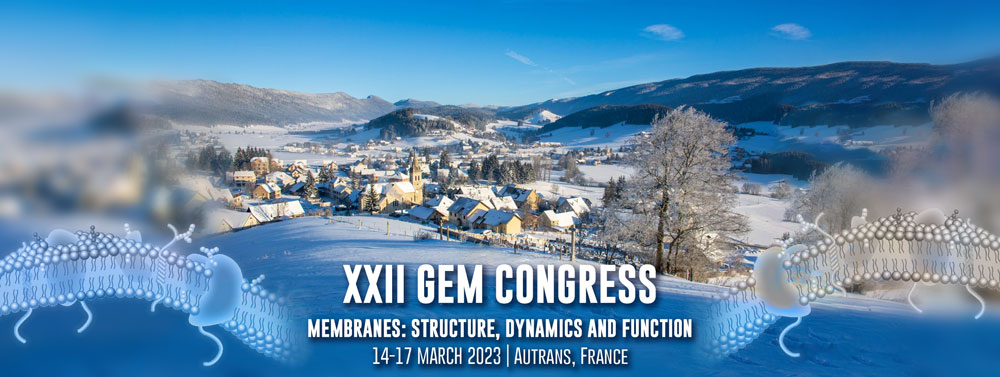Speaker
Description
Topological transitions of membranes, such as pore formation or membrane fusion, play key roles biophysical processes including exocytosis, viral infection, intracellular trafficking, proton transport, and many others. In biological cells these transitions are carried out by complex, asymmetric membranes composed of thousands of lipid species and crowded by membrane proteins. How the lipid composition and lipid-protein interactions control the free energy landscape of topological transitions is poorly understood.
We have developed computationally efficient methods for screening the effects of lipids and membrane-associated proteins on the energetics of the formation of membrane pores or membrane stalks at atomic or coarse-grained resolution. The simulations reveal that the membrane composition may bias such topological transitions by tens or even hundreds of kilojoule per mole, suggesting that the complexity of membranes may have evolved to control the kinetics of such events. For instance, we found that the inner leaflet of a typical plasma membrane is far more fusogenic than the outer leaflet, which may be an adaptation for allowing efficient exocytosis while resisting viral infection. Among our recent work, the calculations provide a critical view on widely accepted continuum models for membrane electroporation, and they reveal how membrane anchors of fusion proteins facilitate membrane fusion.

